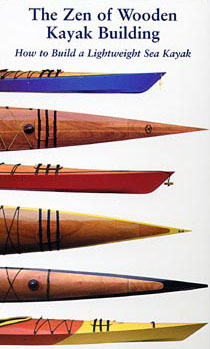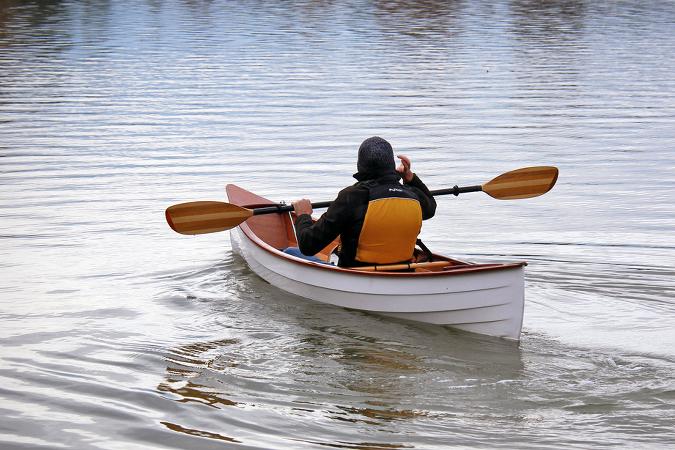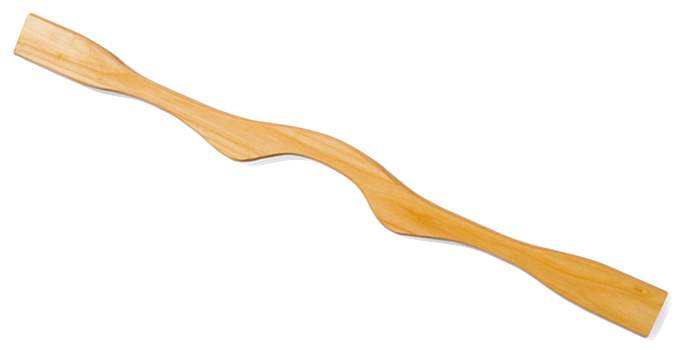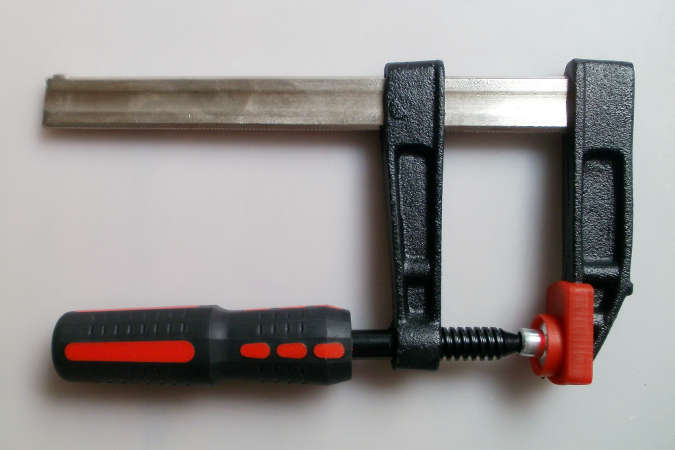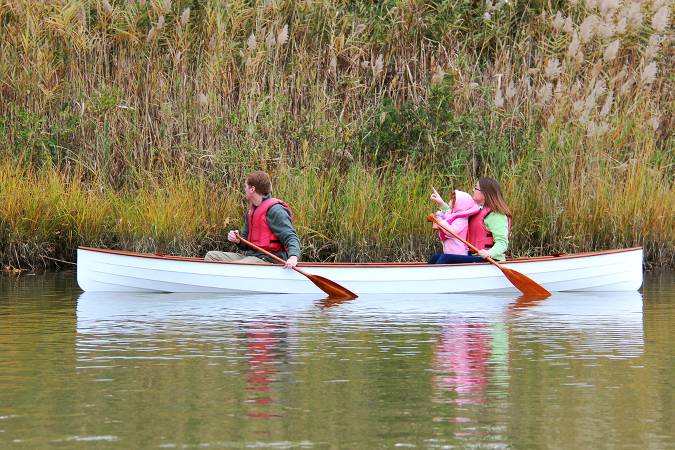

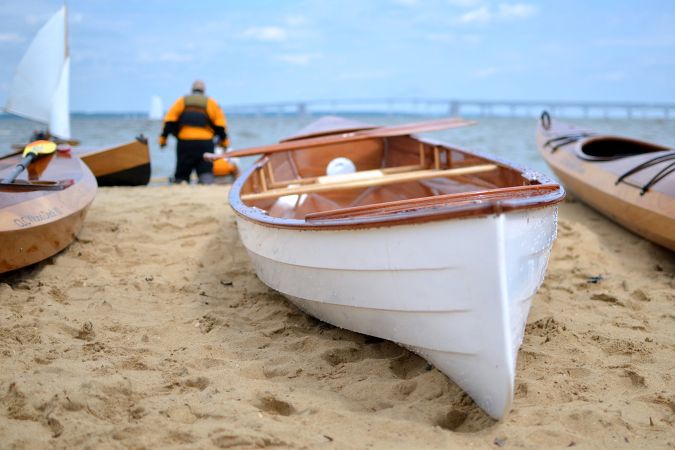
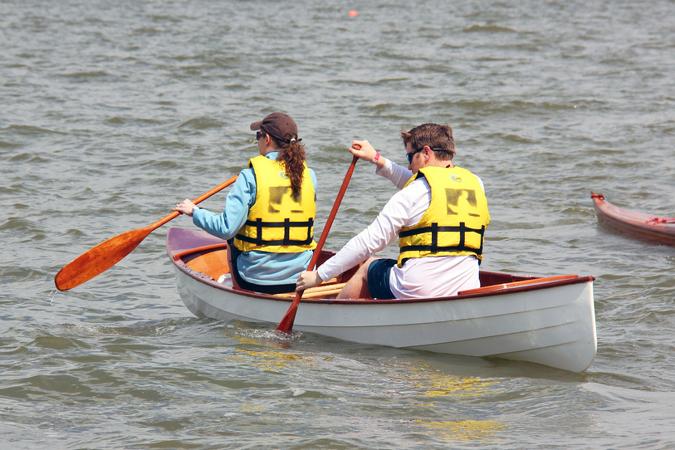
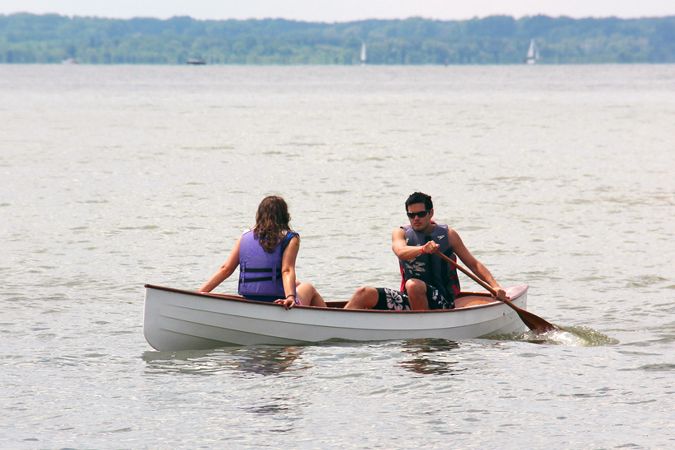
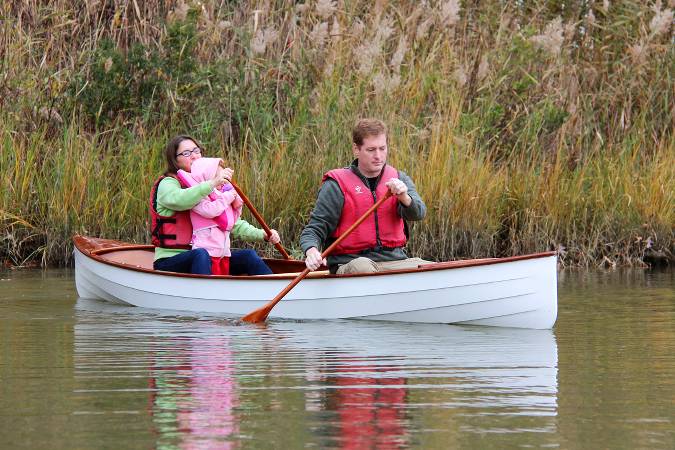






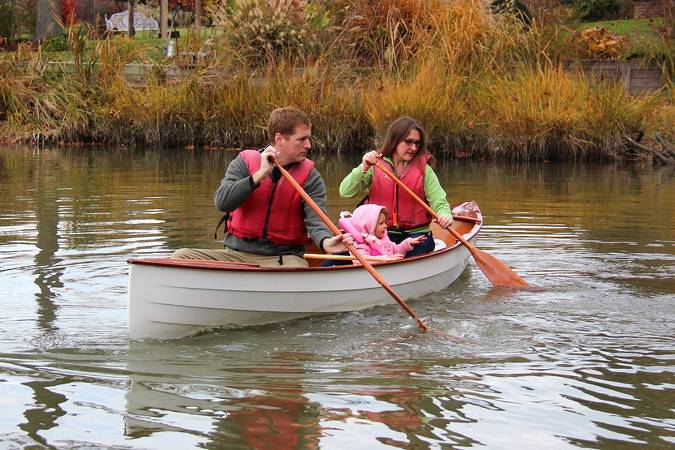
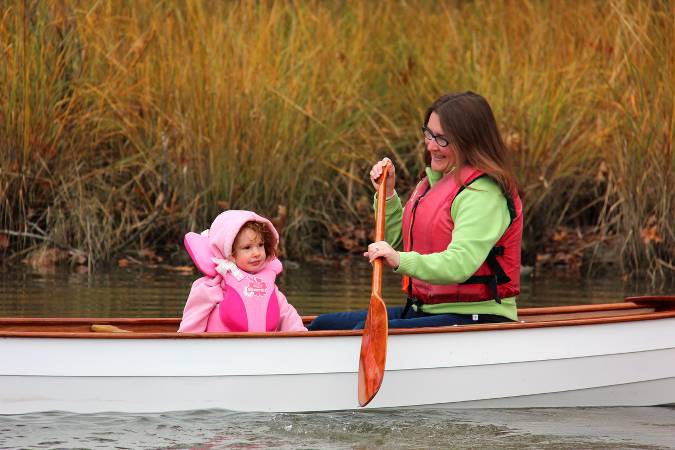
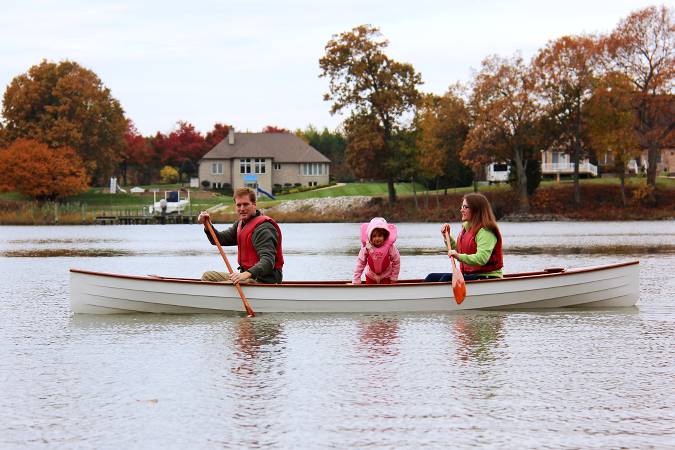
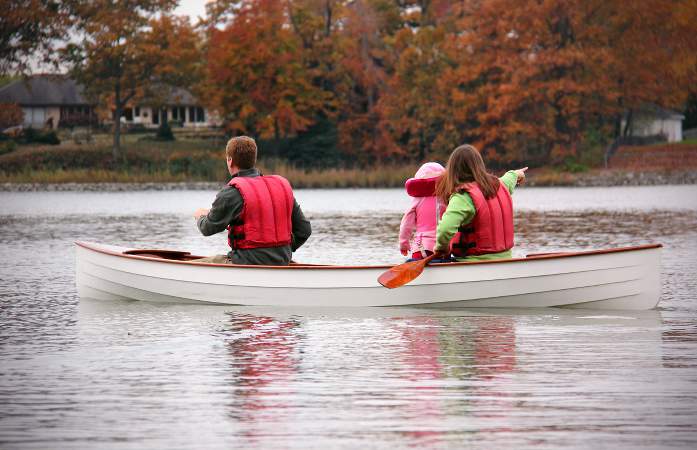
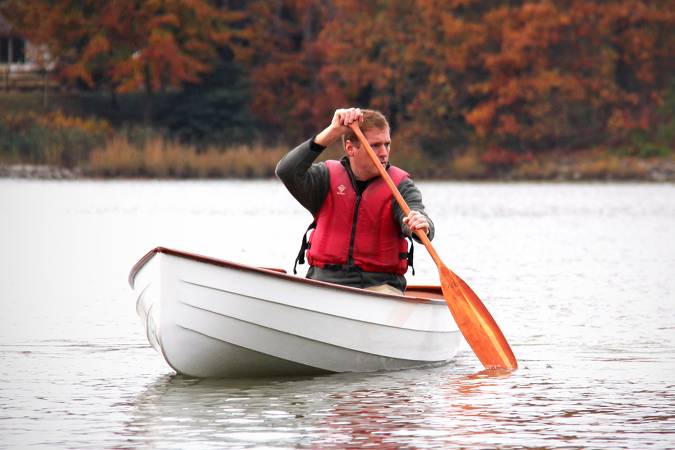
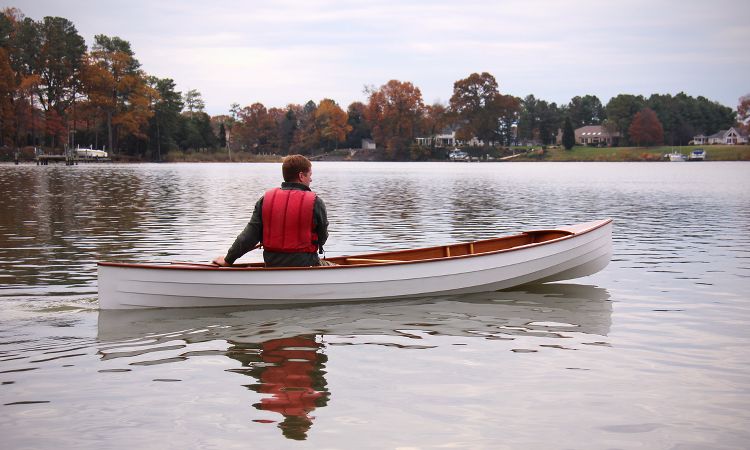
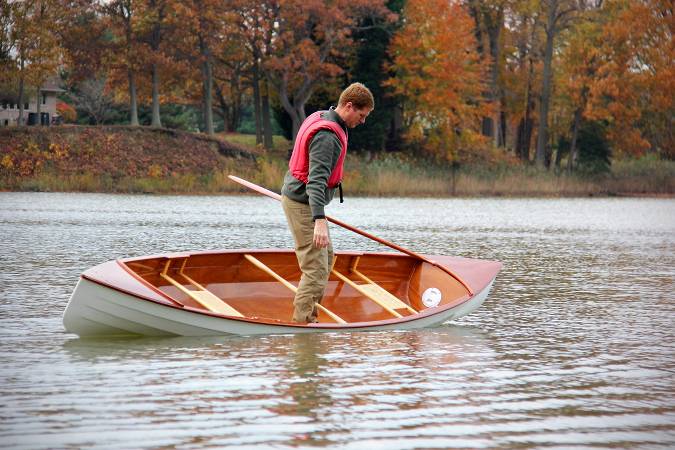
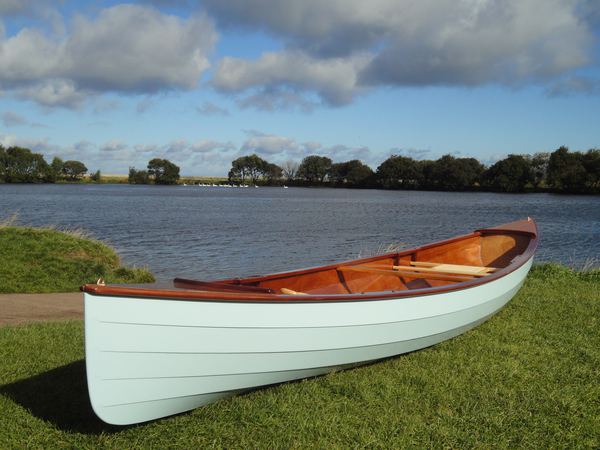
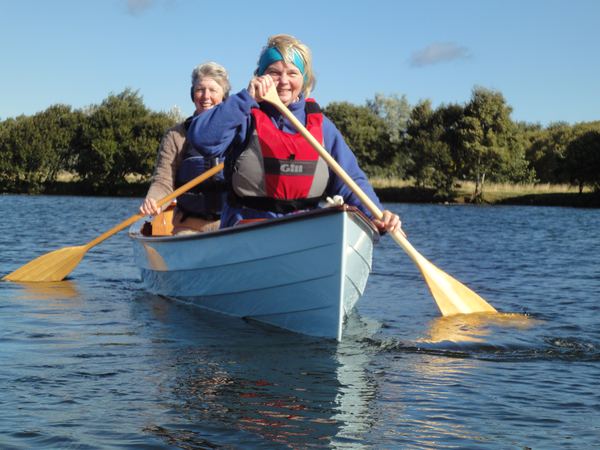
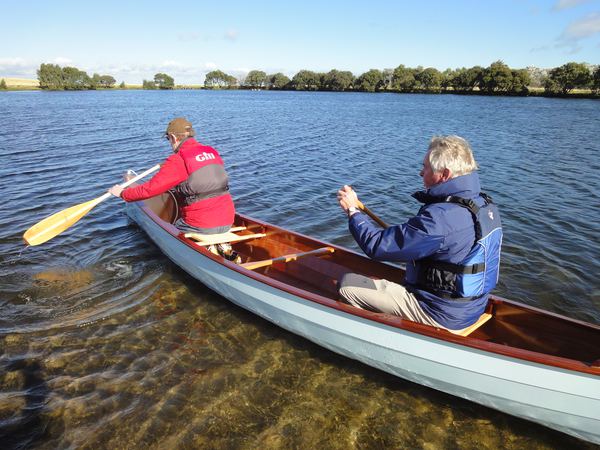
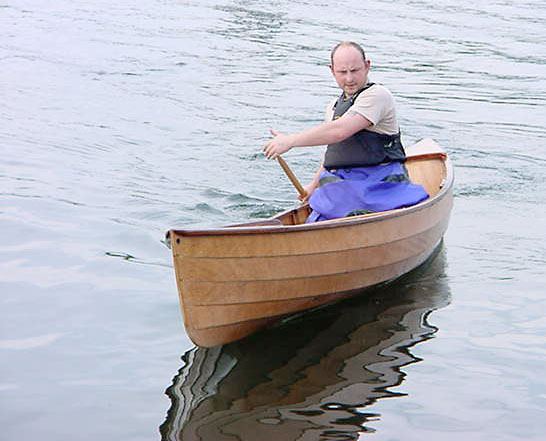
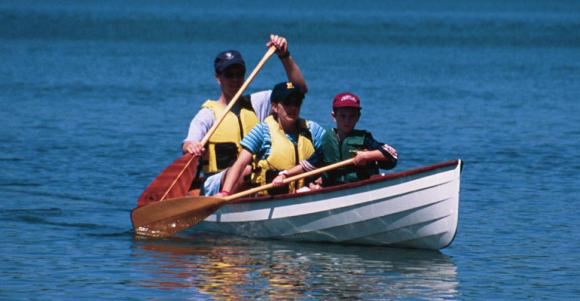
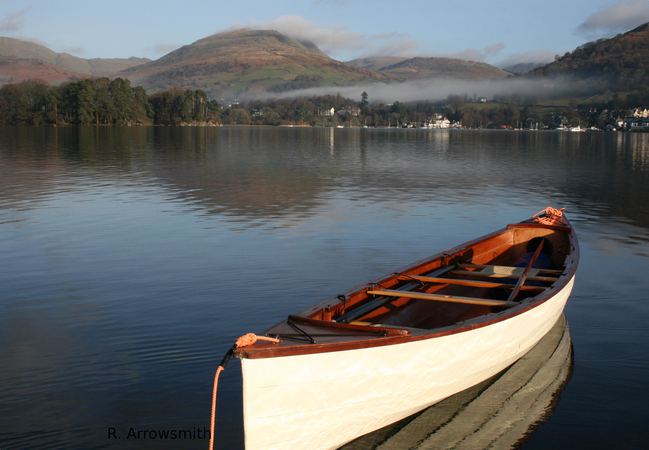

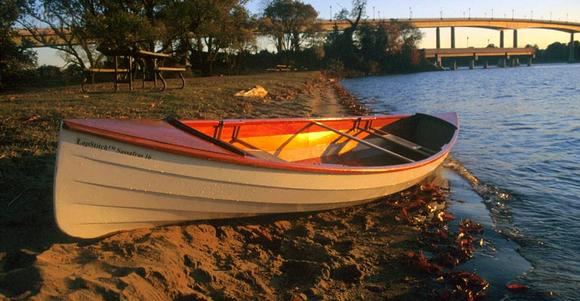
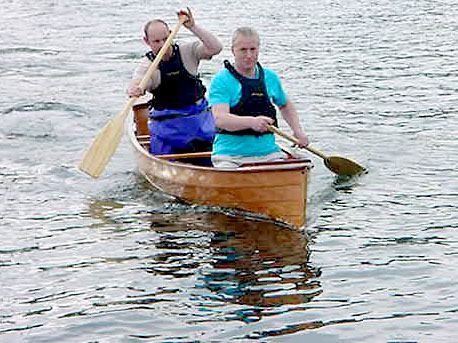
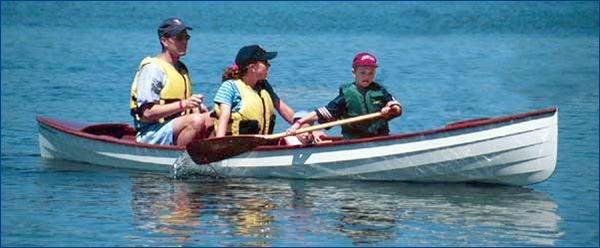
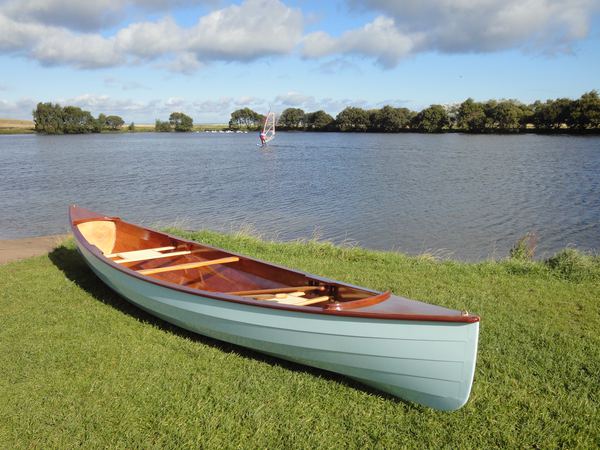
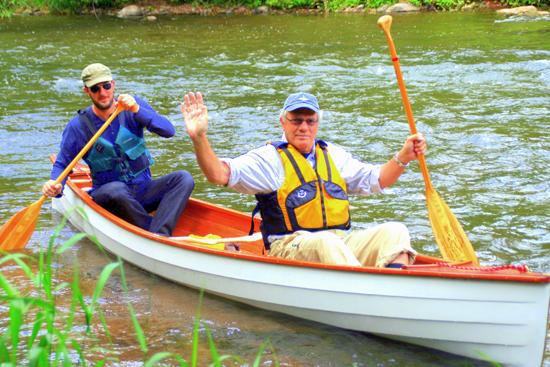
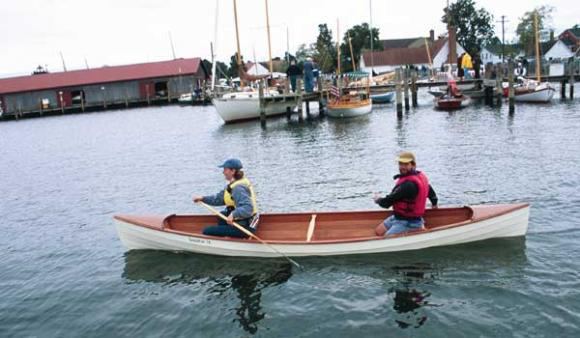
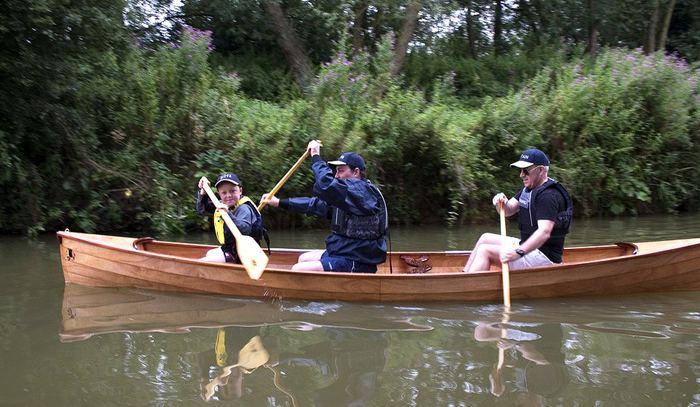
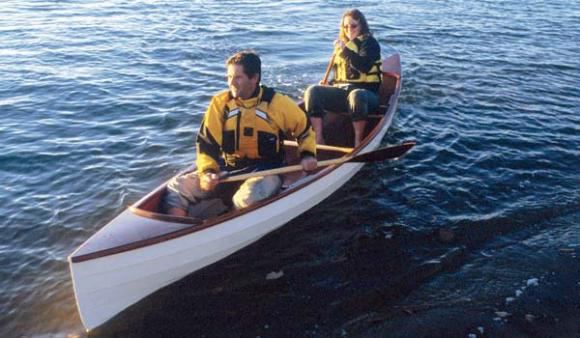
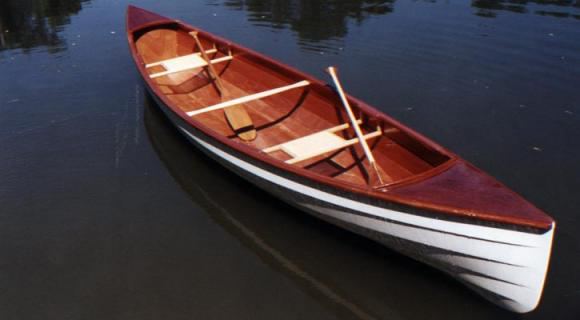
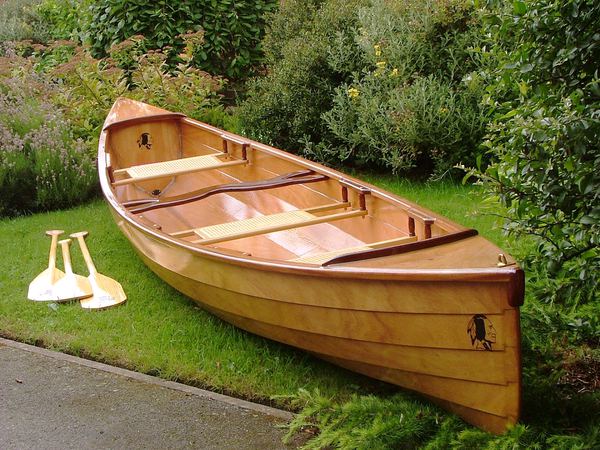
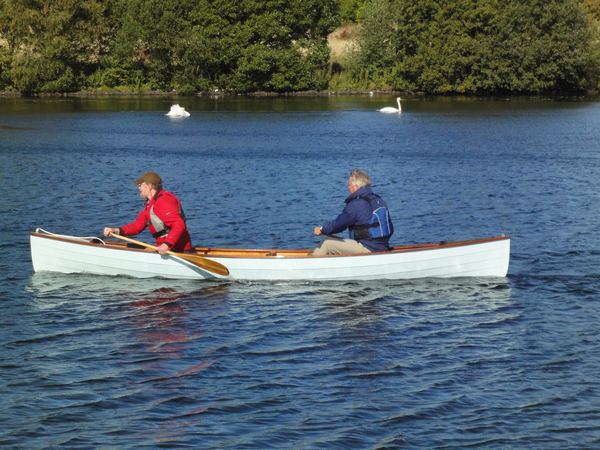
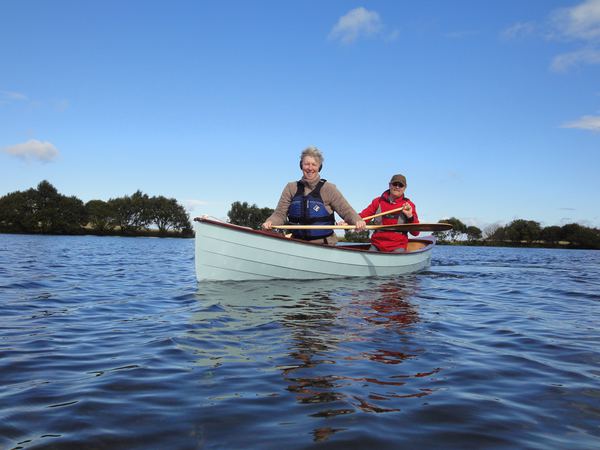
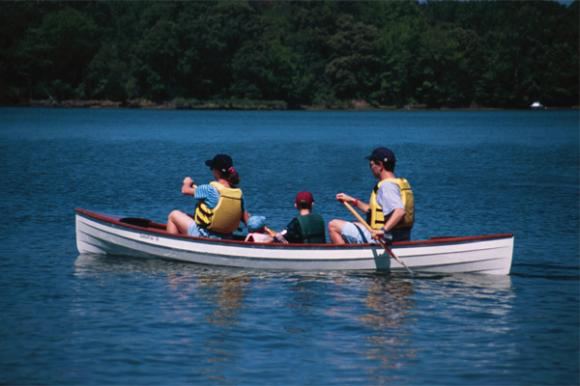
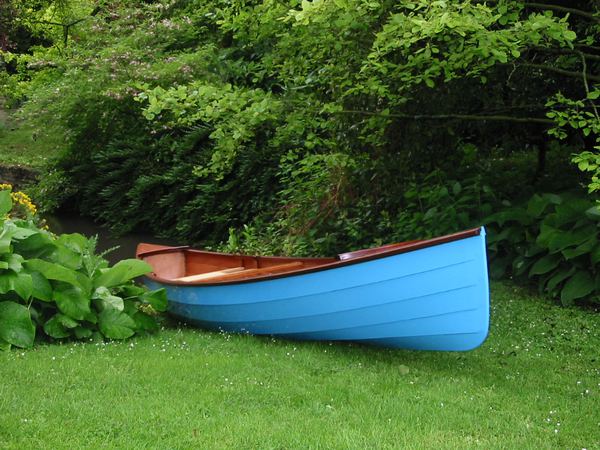
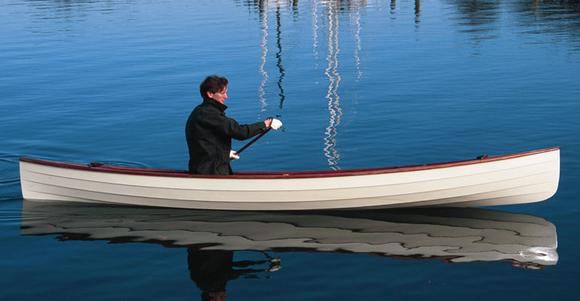
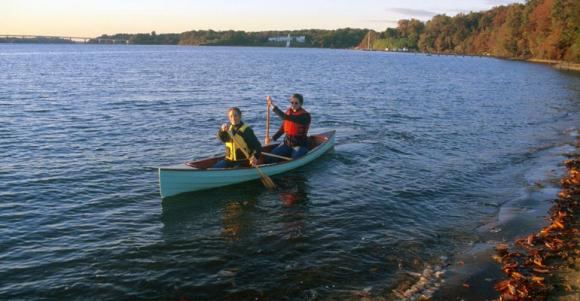
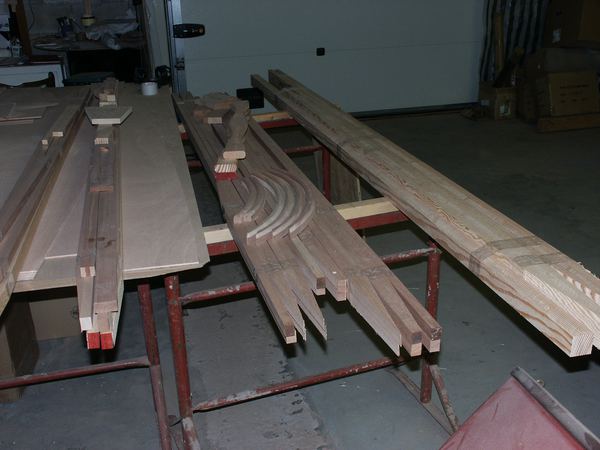
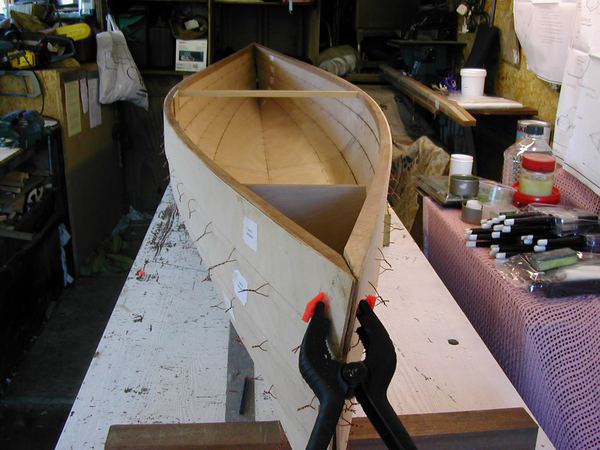
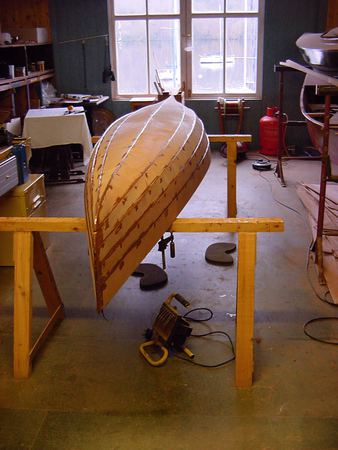
Product Description
The Sassafras 16 is a traditional clinker-style tandem canoe built using modern methods to be very light, making it easy to paddle and to carry.
She has a good initial stability and great secondary stability. Her hull has a slight rocker – not for manoeuvring in whitewater, but rather to reduce wetted surface area – making her almost effortless to paddle. She has a smooth or ‘well dampened’ feel that is characteristic of good wooden canoes.
Like many traditional canoes, the Sassafras 16 is symmetrical, bow and stern. This allows a solo paddler to sit facing ‘backwards’ on the forward seat for better trim.
We are very pleased with the boat and had a great time on launch day.
B A.
There is also a 12-foot solo version of the Sassafras that is paddled with a double-ended kayak paddle.
The lapstrake canoe is an ancient craft, already well refined by the 1880's in the hands of artisans like J. Henry Rushton. The combination of lightweight utility and easy, graceful lines makes the lapstrake canoe a very desirable boat.
Chesapeake Light Craft first introduced the lapstrake Sassafras canoes in the late 1990's. Named after a placid and scenic river on the upper Chesapeake, these handsome canoes are at home in rivers, lakes and bays, able enough to surmount wind chop and powerboat wakes and to carry a good load.
Building clinker canoes traditionally requires extremely sophisticated skills and equipment. Using CLC's LapStitch™ process, lapstrake construction is made accessible to beginners. No strongback, moulds, frames, or steam bending are required; building a LapStitch™ canoe is basically a matter of gluing all the pre-cut parts together.
By 2011, hundreds of Sassafras canoes had been built and the 13-year-old designs were ready for freshening. The revised Sassafras 16 was designed for the 2011 WoodenBoat Show. With much feedback in hand, by 2014 we were ready to make the Sassafras 16 Mark II available to the public. Improvements over the 1998 original include more stability and payload without loss of speed or handling and much-simplified construction.
The Sassafras 16's hull is 6 mm okoume with fibreglass cloth on the lower strakes, inside and out. Watertight buoyancy chambers are fitted at the bow and stern. The kit includes pre-drilled wire holes, puzzle joints, computer-indicated bulkhead locations and a detailed manual making this kit extremely friendly and accessible to first-time builders.
The kit contains:
- Pre-cut plywood panels with pre-cut joints and pre-drilled tie holes
- Solid wood parts
- Epoxy resin and activator
- Epoxy fillers
- Copper ties
- Woven glass fabric
- Woven glass tape
- Cane seats
- Ash thwart
- Comprehensive building manual
- Free technical support from a competent builder
Plans and manual (not required by kit purchasers)
These plans and manual contain sufficient information on the cutting of the panels to make it possible to build the boat from scratch rather than a kit. The plans include full size templates for every part of the boat.
The Sassafras 16 Mark II boasts a vastly expanded builder's manual, with 115 pages and 400 photos and illustrations. Plans builders will also appreciate the detailed instructions for parts fabrication.
Study manual
This is intended for pre-build study or to help with the decision to purchase. This is the comprehensive manual that accompanies the kit; reading it will help you decide whether or not you can build the boat. It describes all of the techniques that will be used during the build and also a step by step guide to construction. It contains a photograph or diagram of every step.
If, later, you decide to purchase the kit the cost of this will be deducted from the kit price.
The manual does not contain the cutting instructions so it is not possible to build the boat from scratch using only this.
PDF study manual
The construction manual for the boat is also available as a PDF download. After credit card authorisation a download link will be sent to the email address put on the order form.
PDF study plans
These study plans are intended to give you an overview of the construction of the boat. They are in PDF format that can be viewed using Adobe Reader. There are two pages and they measure 279 × 216 mm (11″ × 8½″). They can be printed for carrying around.
After credit card authorisation the plans will be sent to the email address put on the order form.
When you have studied the plans, your next step might be to order the printed instruction manual, which will walk you through the project step-by-step.


